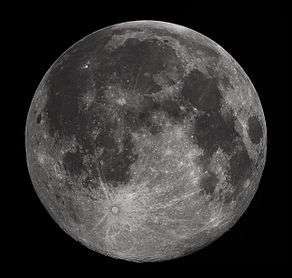Dark moon
A dark moon describes the Moon during that time that it is invisible against the backdrop of the Sun in the sky. The duration of a dark moon is between 1.5 and 3.5 days, depending on the orientation of the Earth and Sun.
In astronomical usage, the new moon occurs in the middle of this period [source?], when the moon and sun are in conjunction. This definition has entered popular usage, so that calendars will typically indicate the date of the "new moon" rather than the "dark moon". However, originally "new moon" referred to the crescent on the first night it is visible, one or two days after conjunction. Maritime records from the nineteenth century distinguish the dark moon (no moon) from the new moon.
Dark Moon as the 30th Division
The Oxford English Dictionary defines the new moon as “the first visible crescent of the Moon, after conjunction with the Sun”. Dark Moon is a term used for a waning crescent. When the Moon is divided into 30 portions as the ancient Greeks did in the time of Homer, the Babylonians did, and the Indians still do till today (calling them tithi), the last phase of the Moon is called the Dark Moon. In Greek it was called the Old Moon and associated with Hecate.[1] In India it is called Amavasya and associated with Kali.[2] Both of these goddesses have a Dark connotation, hence the Dark Moon.
In Babylonian, Greek and Indian practice the Dark Moon is the 12 degrees of angular distance between the Moon and Sun before conjunction (syzygy). The New Moon is the 12 angular degrees after syzygy. A 12 angular degree portion, called uma by the Babylonians and tithi by the Indians, lasts a mean time of 23 hours 37 minutes, but can vary from 21 to 26 hours because of the anomaly of the Moon. This means that the Dark Moon lasts approximately 23 hours and 37 minutes before the time noted as New Moon on a calendar.
